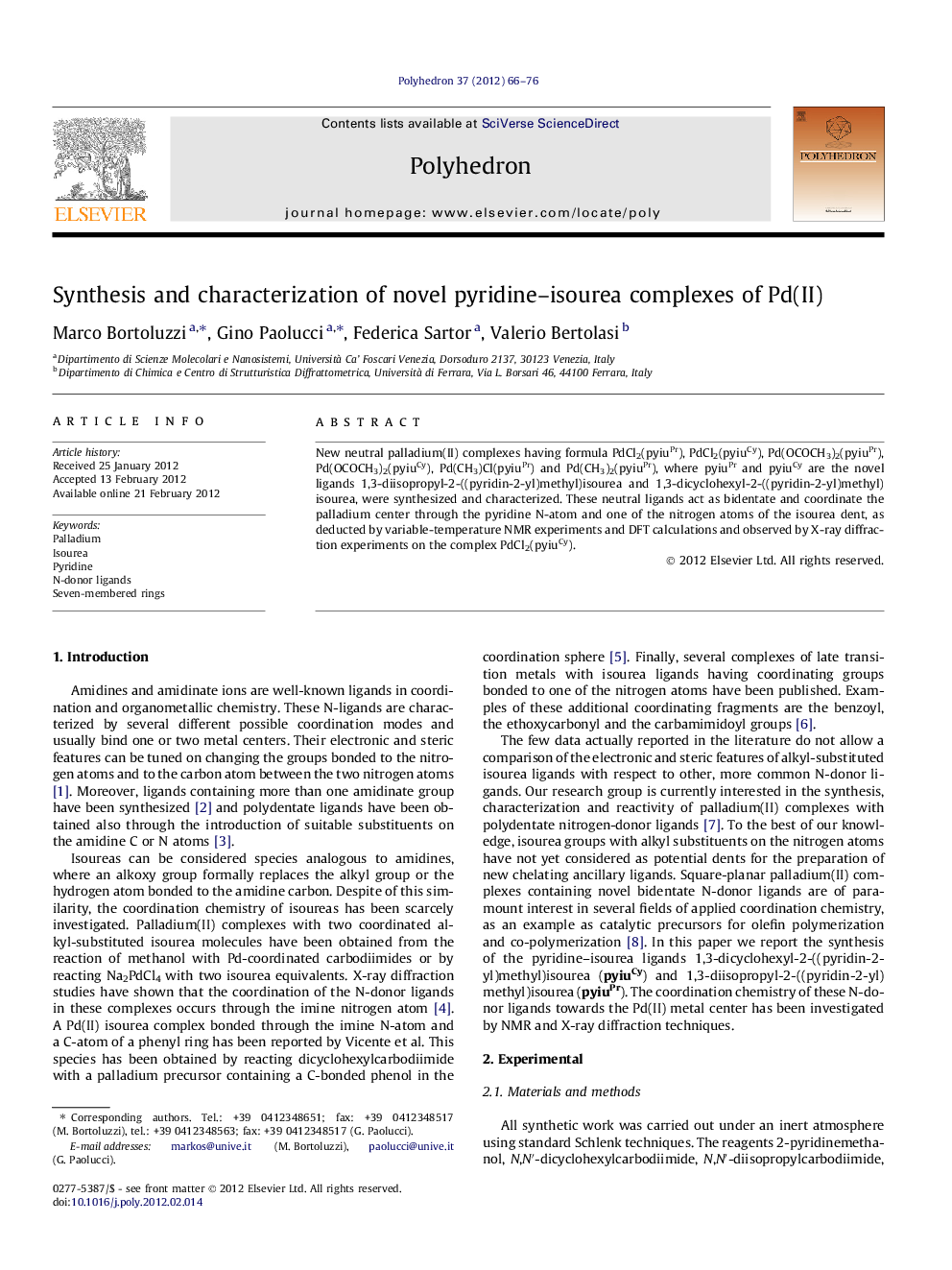| Article ID | Journal | Published Year | Pages | File Type |
|---|---|---|---|---|
| 1334789 | Polyhedron | 2012 | 11 Pages |
New neutral palladium(II) complexes having formula PdCl2(pyiuPr), PdCl2(pyiuCy), Pd(OCOCH3)2(pyiuPr), Pd(OCOCH3)2(pyiuCy), Pd(CH3)Cl(pyiuPr) and Pd(CH3)2(pyiuPr), where pyiuPr and pyiuCy are the novel ligands 1,3-diisopropyl-2-((pyridin-2-yl)methyl)isourea and 1,3-dicyclohexyl-2-((pyridin-2-yl)methyl)isourea, were synthesized and characterized. These neutral ligands act as bidentate and coordinate the palladium center through the pyridine N-atom and one of the nitrogen atoms of the isourea dent, as deducted by variable-temperature NMR experiments and DFT calculations and observed by X-ray diffraction experiments on the complex PdCl2(pyiuCy).
Graphical abstractPyridine–isourea ligands having formula 1,3-dialkyl-2-((pyridin-2-yl)methyl)isourea have been prepared, together with the methanesulfonate salts of their conjugate acids. These ligands act as bidentate in Pd(II) complexes and coordinate the metal center through the pyridine N-atom and one of the nitrogen atoms of the isourea dent, forming a seven-membered ring.Figure optionsDownload full-size imageDownload as PowerPoint slideHighlights► Polydentate pyridine–isourea N-donor ligands have been synthesized. ► These ligands act as bidentate in palladium(II) square-planar complexes. ► X-ray structures of ligands and complexes have been obtained. ► Variable-temperature NMR experiments have been carried out.
